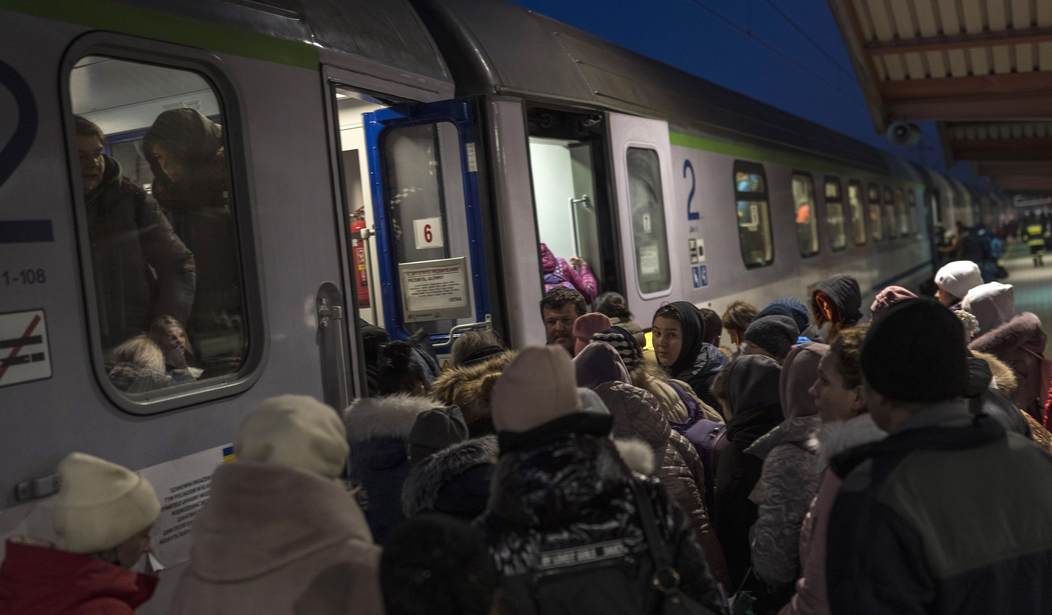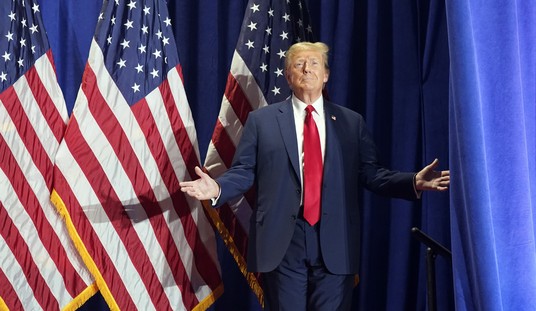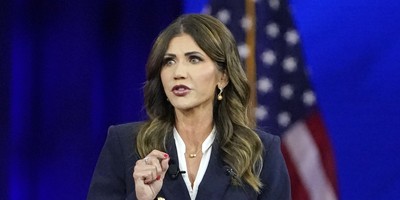Earlier this month, Matt highlighted media reports on a rather niche kind of story, to put it politely. CBS News decided to profile transgender Ukrainians. It turns out they're not the only outlet, though. Far from it. Business Insider and TIME Magazine decided they needed in on this story as well.
Madeleine Carlisle's article for TIME is from March 10, but it's currently the pinned tweet for the outlet's official Twitter account. It was part of their "Daily Spotlight" stories.
Today's Daily Spotlight: Hundreds of thousands of Ukrainian refugees have fled into Eastern European countries such as Hungary or Poland, which have cracked down on LGBTQ rights in recent years https://t.co/xfdKPWi7W7
— TIME (@TIME) March 11, 2022
"After Fleeing Ukraine, LGBTQ Refugees Search for Safety in Countries Hostile to Their Rights," Carlisle's headline reads, in a piece that profiles "Vitaly, who identifies as trans* masculine," whose name has been changed. Even though Vitaly has been able to change gender markers on legal documents, there's also a note that "TIME has granted Vitaly’s request to use a pseudonym because he fears persecution should he return to Ukraine."
The over 1,700-word article chronicles the journey of Vitaly, for whom Carlisle uses male pronouns for, and his wife, as well as the journies of other LGBT Ukrainians. In doing so, though, a significant chunk is spent taking aim at the values of European countries such as Hungary and Poland.
As Carlisle writes at one point:
Recommended
In their ranking of LGBTQ rights in Europe, the advocacy group the International Lesbian, Gay, Bisexual, Trans and Intersex Association, or ILGA-Europe, ranks Hungary 28th and Poland 43rd out of 49 countries. “LGBTI activists and organizations in Hungary and Poland are remarkably courageous,” says ILGA-Europe executive director Evelyne Paradis. “They’ve been enduring years of harsh opposition from political representatives and the consequences of anti-LGBTI measures. In the absence of state support and in the face of rising hate, they got organized and took the lead in helping their communities.”
In Hungary over the past few years, lawmakers have legally defined marriage as a heterosexual union, effectively banned same-sex adoptions, and ended legal gender recognition for transgender and intersex people. In February, a Hungarian judge issued a consequential ruling that said an article likening a lesbian group to pedophiles did not injure its reputation, according to the advocacy group Human Rights Watch.
In Poland, same-sex marriage and adoption are also illegal, and in the past few years roughly 100 municipalities have enacted non-binding resolutions declaring the areas “LGBT-free zones,” sparking protests and sharp criticism from the European Union.
Her report even goes on to equate Hungary and Poland with Russia, where troops were just ordered by President Vladimir Putin to invade Ukraine. The same accusations cannot be made about Hungary and Poland:
“What we see in Hungary and Poland is somewhat of a reflection of a broader trend that is centered in Russia,” says Amie Bishop, a senior research advisor for the global LGBTQ human rights group Outright Action International. LGBTQ people are being demonized by their governments, she argues, in the name of preserving so-called “traditional values” as a tactic to consolidate power and differentiate socially, politically, and culturally from the West.
Carlisle herself, though, acknowledges that these groups have already been in place in Eastern Europe, which begs the question as to why such reporting is necessary other than for the sake of virtue signaling.
"But a vast network of LGBTQ activists and organizations—which were already organized in response to their increasing repression in Eastern Europe—have sprung into action in recent weeks to support LGBTQ Ukrainian refugees, helping them navigate each country they pass through escaping the conflict back home," she also writes.
While Carlisle does make reference to the estimated over 2 million people forced to flee Ukraine, she makes a note to hit her audience over the head with how this story is about LGBT Ukrainians. "Data isn’t available on how many refugees are LGBTQ," she feels the need to insert in there.
It's worth emphasizing, as Carlisle fails to do so, that Vitaly and Vitaly's wife are among the lucky ones, especially when it comes to the plight of Ukrainians who remain behind and are subject to Russia's attacks on civilians and civilian infrastructure.
Carlisle wasn't the only one to get in on such reporting. Bethany Dawson did a profile piece earlier on Sunday, "How a transgender Ukrainian man escaped Russia's invasion: 'I painted my nails violet and wore Mom's shirt to look more girly.'" Twitter helped boost the story as well, by including it in their "News" section on Sunday.
While Dawson's piece, which focuses on 19-year old Andriy, who has transitioned from female to male, is a little bit more self-aware of what is going on in Ukraine beyond an LGBT bubble, it's still honed in on this nuanced issue. Andriy is referred to as male pronouns, despite not having had surgery yet.
As Dawson begins her piece:
Andriy (not his real name) thought the major change in his life would be his gender transition from female to male. But when the Russian bombs started to fall on Kyiv, Ukraine, he was forced to embark on another journey — from a citizen of Ukraine to a war refugee.
Like the 2 million Ukrainian refugees who woke up one day to the terrifying sound of shelling, Andriy, 19, realized that Putin's invasion of his homeland meant the end of his life as he knew it.
"It doesn't matter whether you are trans or not. The war is scary for everybody. I know even strong, big men who are afraid when they hear bombing," Andriy told Insider.
Nevertheless, the reader is meant to sympathize with the plight Andriy has to go through for having to wear women's clothes to get through, since Andriy had female documents.
"If the border force saw him as a man, he would have to stay in Ukraine and not care for his mother," London model and activist Rain Dove Dubilewski said. "It was very painful for him to dress up as a woman, wear his mother's makeup, but it would have been more painful to leave her in a foreign country to start her life over."
That's quite the comparison Dubilewski feels the need to make there.
Ultimately, Dawson couldn't help taking aim at Eastern European track records on LGBT, including Ukraine, which is currently under Russian invasion. "Ukraine ranks 39th out of 49 countries for the treatment of LGBTQ rights, according to ILGA-Europe, an advocacy group for lesbian, gay, bisexual, trans, and intersex people," Dawson wrote. "Ukraine's military call-up affects many trans people."
She closed her piece by noting that Andriy and Andriy's mother are safe in Berlin, again, making them among the lucky ones.
























